CTP Episode of the Day - 10.16.06 - Biogenesis
Today's Cherished Episode: Biogenesis (6x22)
Original Air Date: May 16, 1999
Written By: Chris Carter & Frank Spotnitz
Directed By: Rob Bowman
An extraterrestrial artifact may hold the key to the origins of life on Earth. Fox Mulder must decipher its mysteries, before it destroys him.
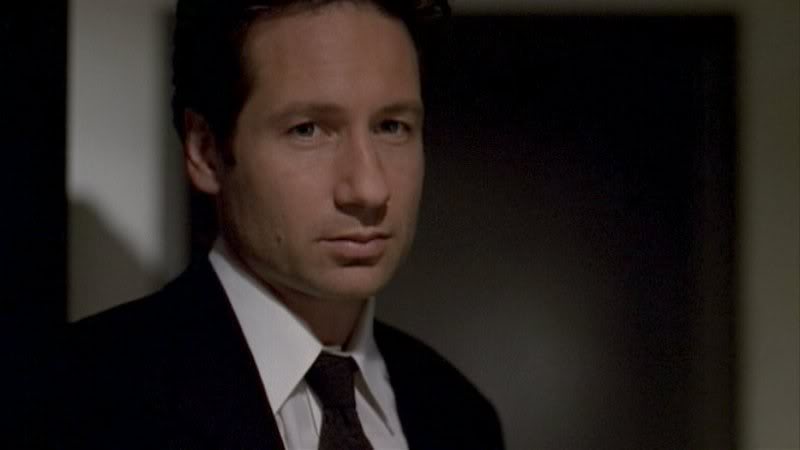
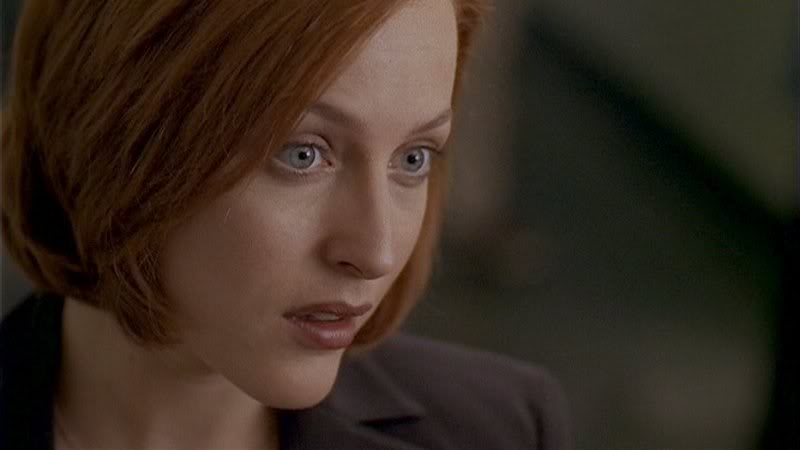
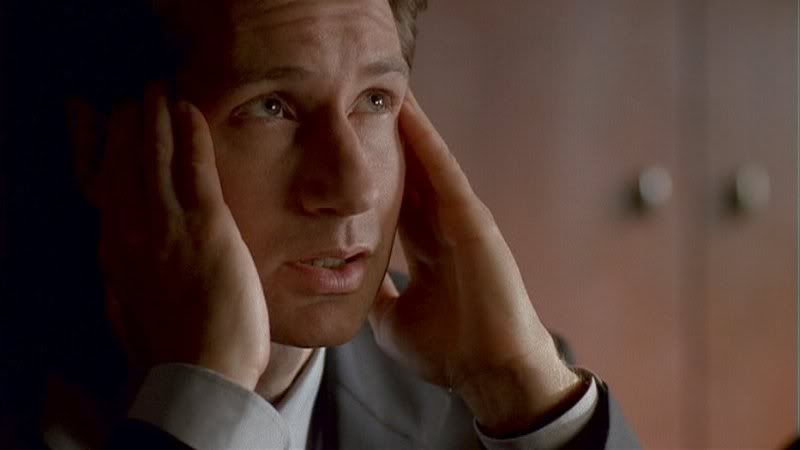
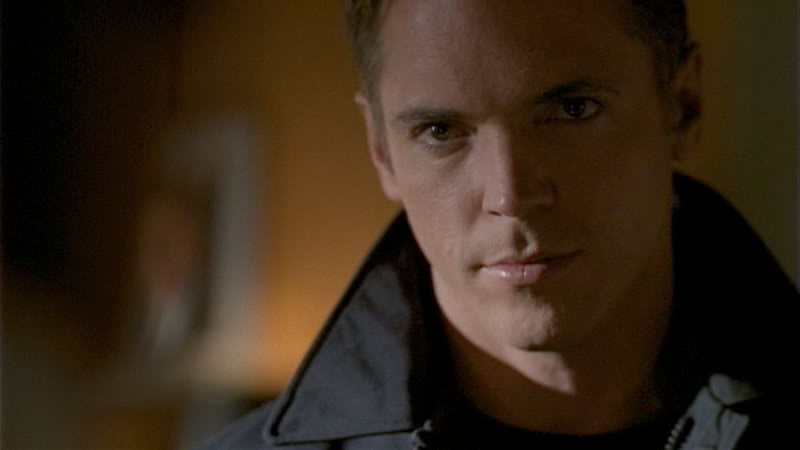
"Mulder... look, after all you've done, after all you've uncovered -- a conspiracy of men doing human experiments, men who are all now dead -- you exposed their secrets. I mean, you've won. What more could you possibly hope to do or to find?"
"My sister."
Some "Biogenesis" Tidbits & Musings:
-- "Biogenesis" means "the doctrine that living organisms develop only from other living organisms and not from nonliving matter." It is also Latin for "creation of life."
-- "Biogenesis," the 139th X-Files episode, completed the first full season of filming in Los Angeles. It reestablished several characters -- the Cigarette Smoking Man, Alex Krycek, and Diana Fowley -- left in post-apocalyptic limbo after "Two Fathers/One Son." It also marked the beginning of a new mythology for the series, one that went beyond exploring the presence or absence of alien invaders and their human allies on earth and toward questioning the basis of human life itself. Did homo sapiens -- emerging into the light 100,000 years ago, after the most recent of the five massive ecological catastrophes to afflict our planet -- evolve "naturally"? Or was our genetic make-up, our planetary ascendance, our very human nature somehow affected by otherworldly influences?
-- "I had been interested in this subject for a while," said Chris Carter, citing scientific research on the five "great extinctions," plus other speculation -- some emanating from legitimate scientific circles, some not -- that extraterrestrial forces were present at mankind's creation. What if hard evidence of all this begins to turn up at the same time as indications of an imminent sixth great extinction? "That would mean," said Carter, "that there would be a scientific basis to the research for extraterrestrials. Which played perfectly into both Scully's scientific bias and Mulder's willingness to believe in the supernatural. Which meant that Mulder's and Scully's belief systems would finally begin to come together -- which was where we were going to go in Season Seven."
-- "I actually met a man very early on during the course of The X-Files," said Carter, "and I told him what I was doing and he told me that he was one of the people responsible for leading the U.S. project to map the human genome. And I became very interested in what he was telling me, and I realized this was exactly what I wanted to do with the show."
-- The idea of alien genetic influence -- in various forms from black oil to deadly bees to the mind-reader Gibson Praise's genetic abnormalities to the transformation of Cassandra Spender into a human-alien hybrid -- had been a more or less constant theme in the recent mythological context of the series and the X-Files movie. But "Biogenesis," explained executive producer Frank Spotnitz, took this to a much higher level. "A lot of the major ideas in the episode were ones that Chris and I had been talking about for two or three years," he said. "And so it actually became easier to visit those ideas once we'd cleared away the conspiracy."
-- Not easy at all, unsurprisingly, was the transformation of "Biogenesis's" darkly complex script -- much of which was written by Chris Carter while he was in Vancouver working on the pilot for Harsh Realm and faxed page-by-page to a nail-biting production staff -- into a properly riveting season-ender.
-- "What Chris does," said Rob Bowman, "is write down the side of the page. He never writes right to the point, he writes around it. And he trusts you to fill in the blanks, which is good writing but of course more of a challenge. And I wasn't sure while I was shooting it that it would all work, but I did believe in Chris's writing, and deep down I felt 'This is good.'"
-- "It was fun for us, particularly working on 'Biogenesis," because we got to approach the whole idea of aliens and humans from a completely different point of view," said Frank Spotnitz. "No longer did we have to deal exclusively with Black Oil and white-haired men conspiring. We could say, 'What if there was a spaceship that washed ashore in Africa, and this spaceship contained passages from the Bible and the Koran and all these religious texts. What would that mean?' And one of the themes that had also developed in The X-Files over the years, was the relationship between searching for aliens and searching for God, and how, in so many ways, they're very similar. They ask a lot of the same questions, and the answers – if you could find those answers, they'd have the same kind of profound impact."
-- "So we decided to tie that in with the alien mythology that we had created," said Carter, "and in doing so, I got to do something that I always liked to do, which was to talk about science, real science, and have Scully talk about it in terms of God and of meaning and of our lives and of our futures. Ultimately, we choose to, in season six, really get rid of the conspiracy, and to let the audience, the fans, understand that we were moving into new territory."
-- "If we'd been telling one long novel through all the mythology episodes," said Frank Spotnitz, "the first six years of the series, this was a chapter in a new book."
-- John Shiban explained "Biogenesis" this way: "It was an effort, I think, to go backwards and explain the plan from the beginning. Let's take a step back now and show you something which is: here's an artifact that may or may not have started humanity, that started evolution. There is a legitimate scientific theory that life on earth may have come from another planet from a meteorite that landed, and that's kind of was where it started, and the idea that all religion and all culture and everything started with the aliens. It's sort of a way to go back to the beginning and say, OK, this is what we're dealing with and this is where we are today."
-- According to Rob Bowman, David Duchovny's real-life state of anxiety at the imminent arrival of his first child distracted the actor somewhat from his task, but not so that anyone would notice, since his character was also being distracted (albeit in a much more insidious way) by the cacophony of voices inside his head.
-- For the vital part of Dr. Solomon Merkmallen, casting director Rick Millikan called in Michael Chinyamurindi, an actor who had moved to Los Angeles from his native Zimbabwe ten years earlier and had tried out previously for the African-themed episode "Teliko."
-- To cast the fishermen at the seaside African village where the extraterrestrial artifact is found, Millikan dipped into the surprisingly large pool of L.A.-based African immigrants available as extras and day players (including one extra-talented Nigerian-born extra, Ayo Adeyami, who serenaded the cast and crew with bracing sets of vigorous Yoruba drumming between shots).
-- To serve as the location for the seaside village itself, the producers rented Leo Carillo State Beach, a popular windsurfers' hangout about 30 minutes up the Pacific Coast Highway (Highway One), north of Malibu. Tidal conditions on the beach meant that director Rob Bowman had as little as 47 minutes per day to film certain scenes involving Scully's discovery of the artifact fragments at the waterline.
-- Leo Carillo State Beach was named for California actor Leo Carillo (1880 - 1961) who served on the State Parks Commission. He was best remembered for the 1950s TV series The Cisco Kid, in which he played Poncho (a role he had previously carried out in several films), sidekick to Duncan Renaldo's Cisco Kid.
-- The portion of the beach used for filming was bisected by a rocky outcropping. On top of that point -- in a miracle of eco-friendly rigging using no drills or screws or anything that would leave a permanent mark on the rock -- key grip Tom Doherty and his crew erected a stable wooden platform (at times, the wind roaring in from the ocean sometimes reached 40 miles per hour) upon which they installed a forty-foot long camera crane with a computer-controlled camera at its end.
-- By floating large "green screens" in the surf, then combining the shots filmed by the crane camera with a digital spaceship created by special effects producer Bill Millar, the alien craft was placed in the surf for Scully's final-scene discovery. All in all, this feat took twenty-five straight hours of high-speed computer time; Millar estimated its total cost was $150,000.
-- To come up with appropriate lettering for the alleged extraterrestrial artifacts (the Navajo language being completely verbal, without any written notation or alphabet whatsoever), researcher Lee Smith dredged up articles about and photographs from the so-called "Kecksburg Incident," in which an alleged extraterrestrial object dropped in on a small town in Pennsylvania on December 9, 1965. "I sent pictures of the weird writing on this bell-shaped article to the art department, and they did the rest," said Lee.
-- To obtain the requisite cloud of black flies for the scene in which Mulder and Scully discover Merkmallen's body in the trash compactor, property master Tom Day contracted with a Pasadena-based "fly wrangler," and prayed that the weather would be warm enough for him to corral a big enough crop at a local dairy farm to make it to the set with enough of the disgusting day players still alive. Day's prayers were answered.
-- On a much more serious level was the concerted effort by The X-Files to guarantee the accuracy and proprietary of the Navajo symbols and religious ceremonies used in "Biogenesis." Hired to oversee it all -- and to consult with his tribal elders back in New Mexico -- was Hosteen Etsitty, a Navajo artist and lecturer who had previously created the Navajo sand paintings in "The Blessing Way."
-- There were some inaccuracies in "The Blessing Way," including a Navajo ceremony combined with a Northern Plains Indian song; and for "Biogenesis," Etsitty recruited an apprentice Navajo medicine man, Thomas Goodluck, to conduct part of the Emergence Way, the proper Navajo ceremony for a dying man such as Albert Hosteen. Etsitty also approved the ceremonial Navajo garments, which the wardrobe and prop departments produced after much research and which amazed him with their authenticity and accuracy.
-- And lastly, but perhaps prophetically, in filming the important scenes at Dr. Barnes' lab at American University, The X-Files facilitated an interesting convergence of science and what lies just beyond. To secure the appropriate academic environment locations manager Ilt Jones approached the Chemistry and Biochemistry Department at the University of California at Los Angeles, just a few miles from the Fox Studios. "It's tough to get permission to shoot at UCLA," said Jones, "which is a shame because they have many beautiful buildings but, obviously, they see their primary character as education and research, not entertaining the viewers at home."
-- "So finally I had to meet with the chairman of the department," Jones continued, "a very taciturn Polish-born chemist who looked like he had hydrochloric acid running through his veins. He really put me through the wringer. The first words out of his mouth were, 'Why on earth should we do this?' Which is a hard question to answer in under seven seconds. And which we eventually did answer in, I think, a very effective way: We gave the department $20,000, to be used to pay for the education of a graduate student from overseas." Asked what the Scholarship would be called ("The X-Files Scholarship?" "The Mulder-Scully Student Fun?" "The Chris Carter Postgraduate Speculative Science Award?"), Jones said, "You know, I think they're still working on it."
-- Scully's teaser voiceover could be subtitled "Dana Explains It All," as she covers everything that happened between "In the beginning, God created," and the start of this episode. And we get a shot of the Fight the Future cavemen for good measure.
-- Oopsie! When the flying artifact imbeds itself in the Bible highlighting an important passage, it also rearranges the whole bookshelf around it. Between the time it lands in the Bible and when Dr. Merkmallen retrieves it, several of the books that were standing vertically to the right of it switched to being horizontal to the left of it.
-- The artifact imbeds itself in Genesis 1:28: "And God blessed them, and God said unto them, be fruitful and multiply, and replenish the earth, and subdue it; and have dominion over the fish of the sea, and over the fowl of the air, and over every living thing that moveth upon the earth."
-- Other than the voiceover, no Mulder and Scully for nearly 13 minutes.
-- Panspermia - The theory that microorganisms or biochemical compounds from outer space are responsible for originating life on earth and possibly in other parts of the universe where suitable atmospheric conditions exist. From the Greek for mixture of all seeds.
-- One of the most poignant and heartbreaking moments of the entire series, IMBO, is the scene when Scully asks Mulder what more he hopes to find. You can feel Mulder's sorrow and his disappointment (which he conveys through his voice and slight movement of his head) that he had to remind Scully that what it had *always* been about for him was finding his sister, and that remains undone. Kudos to DD and to GA as well for clearly demonstrating that Scully feels like a heel for momentarily forgetting this important detail.
-- Bill Dow returns as Mulder's buddy Dr. Chuck Burks for the first time since Season 4's "Leonard Betts." And even he is calling Mulder "Fox."
-- Mulder had obviously spent time trying to make the old office feel like home again: When Mulder and Scully are examining the artifact in his office, there are pencils hanging from the ceiling tile over Mulder's desk in the background.
-- The Season 6 DVDs contain one deleted scene from this episode that shows Albert Hosteen helping Dr. Sandoz translate the artifact.
-- CGR (Cosmic Galactic Radiation) isn't just something they made up (though it's more commonly referred to as GCR {Galactic Cosmic Radiation}).
-- Oopsie! The scene in the hospital corridor as Scully prepared to visit Albert Hosteen was intended to be shown in slow-motion, but had to be sped up for time. Thus, the end result looked rather odd.
-- Not only did Mark Snow sample quite generously in this episode from his score for Fight the Future, he also recycled music used in "Teliko."
-- Dropping in without explanation was Diana Fowley, a role Mimi Rogers was glad to step into again. "The relationship between Fowley and Scully is a lot of fun, actually," she said. "Because clearly Scully doesn't like her, doesn't trust her, feels threatened by her, is definitely threatened by Diana's past with Mulder. When he's sick and I'm in Mulder's apartment, at the end of that scene you see me pulling my top off. The word that I got was that I was supposed to be going in for the kill."
-- One of the most annoying things about the episode from the shippers' perspective was having Fowley began to disrobe in Mulder's apartment because the only logical purpose it served was for the writers to tweak the audience, a bit of self-indulgence on the part of Carter and Spotnitz to get their giggles at how the audience would react to this veiled insinuation that Fowley was preparing to seduce a very sick man. Interestingly, fans who read the spoilers were very aware of the scene that was cut from the final version of the episode in which Mulder rejected Fowley's advances and so she shot him with a stun gun.
-- Oopsie! Or perhaps just amusing -- Dr. Sandoz tells Scully not to tell anyone where he is -- right after he listens to her do that very thing on the phone.
-- Murray Rubenstein (Dr. Sandoz) had a recurring role on the series American Dreams.
-- Once & Future Retreads: In addition to the reappearance of recurring characters Chuck Burks, Alex Krycek, Diana Fowley, Cigarette-Smoking Man, and Albert Hosteen, Marty Zagan (Landlord) was Mr. Coeben -- Scully's landlord in "Within." Bill Dow (Chuck Burks) also played the Father in "Jersey Devil" and Dr. Newton in "War of the Coprophages." And of course Nicholas Lea (Alex Krycek) was also Michael in "Gender Bender."
-- Although X-Files management was prepared to suspend filming to accommodate the birth of David Duchovny's first child, it proved to be unnecessary. Thanks to good luck and some adroit scheduling, Madelaine West Duchovny -- daughter of David Duchovny and Tea Leoni -- was born on April 24, 1999; two days after the filming of Fox Mulder's final scene in "Biogenesis."
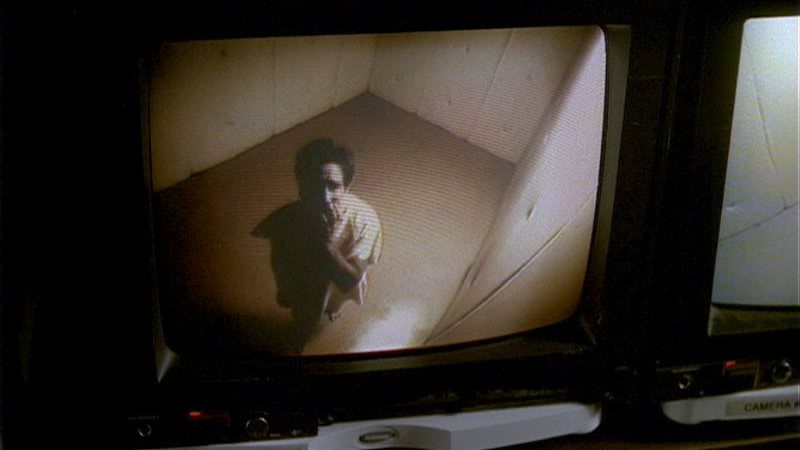
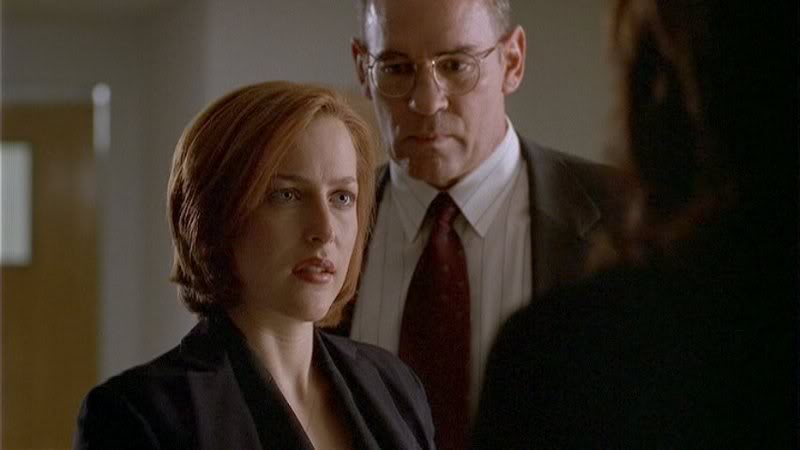
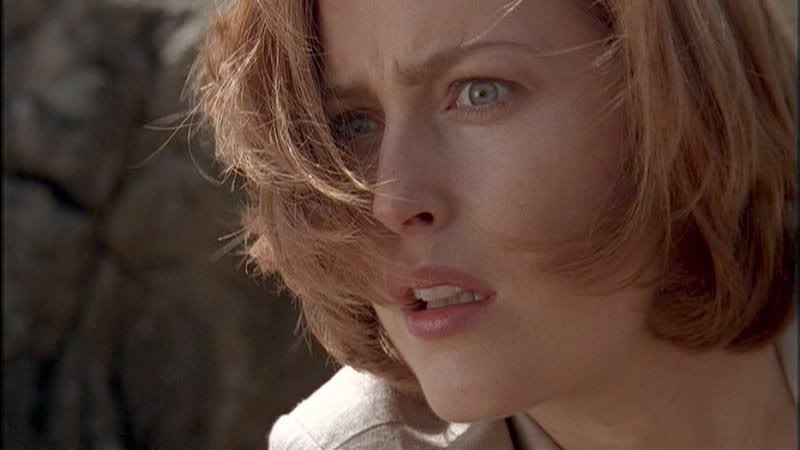

(Thanks to chrisnu for today's pics.)
Please share your first impressions, favorite (or cringe-worthy) moments, classic lines, favorite fanfic, nagging questions, repeated viewing observations, etc., as today we celebrate "Biogenesis."
Polly